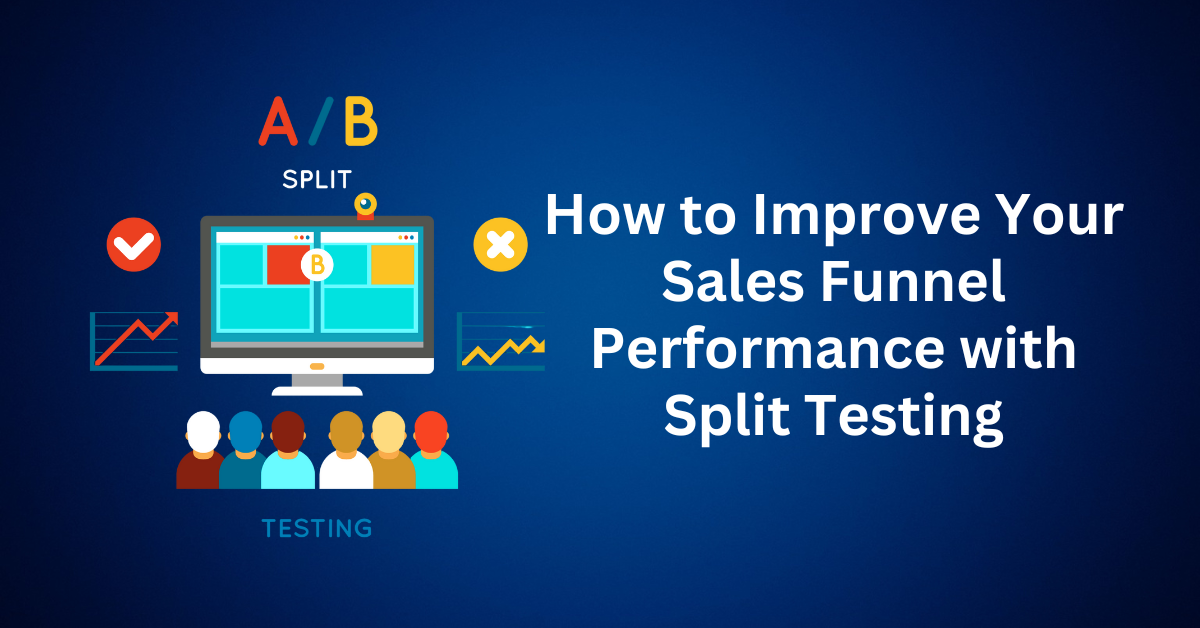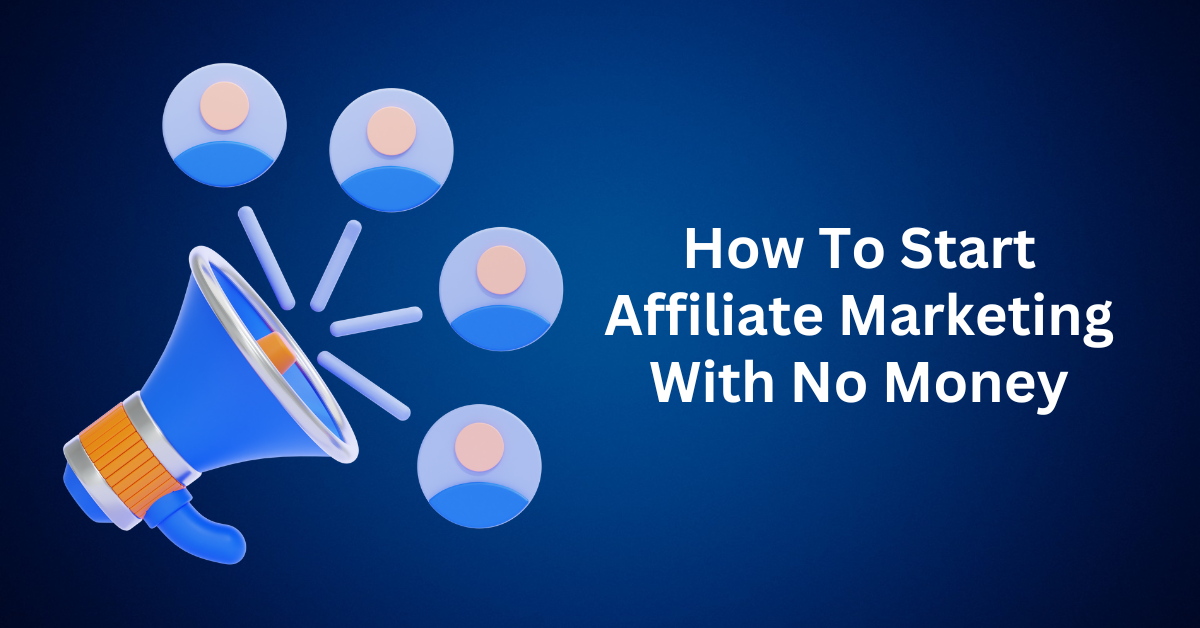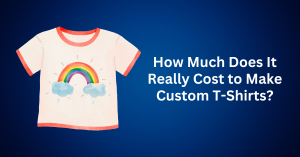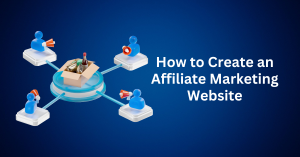If you’ve ever found yourself staring at your website or campaign analytics, wondering, “Why aren’t more visitors converting?” you’re not alone. In fact, many marketers and business owners struggle with the same challenge. Often, the secret to transforming a good sales funnel into an outstanding one comes down to optimizing the smallest details. Even subtle tweaks can significantly influence user behavior. And one of the most powerful tools to uncover these hidden opportunities? Split testing.
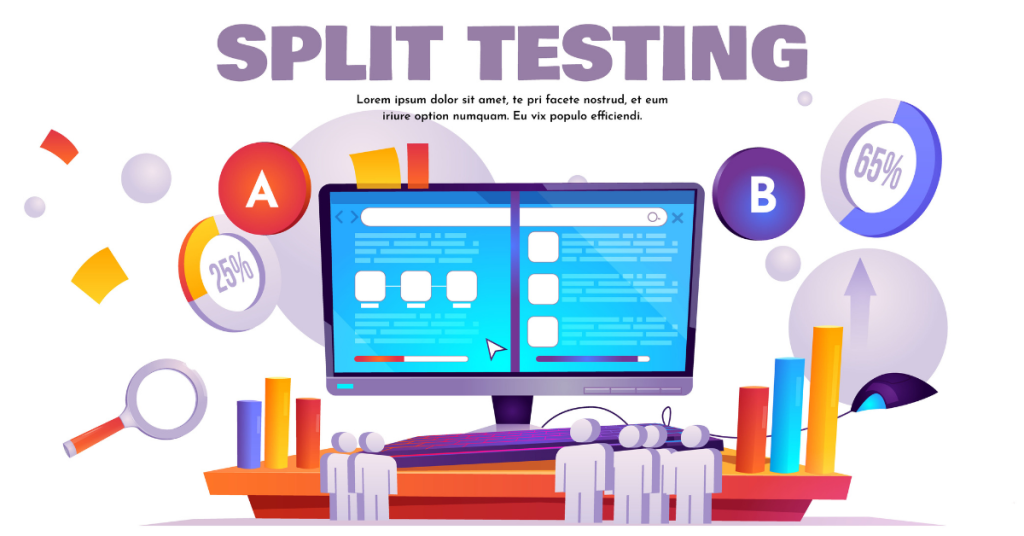
Table of Contents
ToggleWhat Exactly Is Split Testing?
Split Testing, also known as split testing, is a method used by businesses to compare two different versions of a marketing element to see which one performs better. Instead of guessing what might work, split testing relies on real data to drive decisions.
Here’s how it works step-by-step:
- Create two variations: Start with your original version (Version A), such as a webpage, email, or ad, and then create a second version (Version B) with a single change. This could be a headline, a button colour, or a call-to-action phrase.
- Split your audience: Randomly divide your traffic so that half see Version A, and the other half see Version B. This ensures an unbiased comparison.
- Measure results: Track how each version performs against key metrics like click-through rates, sign-ups, or purchases. The version with better results indicates which change is more effective.
Why Split Testing Is Crucial for Optimizing Your Sales Funnel
Your sales funnel is the journey your potential customers take, from discovering your brand to making a purchase. If any step along this path isn’t working well, prospects drop off, and sales suffer. This is why split testing is invaluable; it helps you identify and fix weak points in your funnel.
Boost Conversion Rates with Data-Driven Decisions
One of the biggest frustrations, for many marketers, is watching visitors leave a site without taking action. However, split testing helps by pinpointing exactly what motivates people to click, sign up, or make a purchase. For instance, testing different call-to-action phrases like “Buy Now” versus “Shop Now” can reveal which wording drives more clicks. Armed with these insights, you can then optimize every page in your funnel to ultimately maximize engagement and conversions.
Gain Deeper Customer Insights
Split testing isn’t just about numbers. It’s also a powerful way to understand your audience better. By experimenting with design elements, messaging, and offers, you learn what resonates most with your visitors. Whether it’s the placement of a button, the colour scheme, or the tone of your copy, these small preferences matter and guide your marketing strategy.
Drive Higher Revenue Through Incremental Improvements
Even minor adjustments, as revealed through split testing, can lead to significant revenue growth over time. As more visitors complete key actions within your funnel, such as adding items to their cart or finishing the checkout process, your overall sales naturally increase. Moreover, split testing helps you identify which specific tweaks have the greatest financial impact, ultimately turning small changes into substantial gains.
5 Essential Areas to Apply Split Testing in Your Sales Funnel for Maximum Results
A sales funnel is made up of several critical stages. Each one plays a vital role in turning casual visitors into loyal customers. To optimize these stages effectively, split testing is your go-to strategy. By experimenting with different elements at key touchpoints, you can identify what truly drives engagement and conversions. Below, we dive into five essential parts of your sales funnel where split testing can have the biggest impact.
1. Landing Pages: Capturing Attention Right From the Start
Your landing page is often the first point of contact between your business and potential customers. Because of this, it needs to make a strong, immediate impression. Otherwise, visitors may bounce away without taking any action. That’s why landing pages are ideal candidates for split testing.

To begin, start with your headlines. Try comparing a headline that highlights a clear benefit with one that poses a thought-provoking question. Since headlines set the tone for the entire page, even small changes can have a dramatic impact on visitor interest. Next, experiment with the visuals. For instance, swap out a standard product photo for a lifestyle image, or test different hero shots to determine which one captures attention more effectively.
In addition, don’t overlook your call-to-action (CTA) buttons. Test variations in color, size, placement, and wording. Sometimes, something as simple as changing a button from “Get Started” to “Claim Your Discount” can significantly increase click-through rates.
2. Email Campaigns: Engaging Your Audience Effectively
Email remains one of the most powerful channels for nurturing leads and guiding them through your sales funnel. However, the difference between an opened email and one that gets ignored or deleted often comes down to small details. That’s where split testing becomes invaluable.
Start by testing your subject lines. Try comparing questions versus statements, adding personalization like the recipient’s name, or incorporating emojis to see which approach drives higher open rates. Next, evaluate your email content. Test short, punchy messages against longer, more detailed emails to determine which format your audience prefers. Additionally, experiment with different tones, formal versus casual, to uncover what resonates best with your subscribers.
Lastly, don’t underestimate the importance of send times. Different audiences engage at different hours. For instance, B2B recipients may respond better during standard business hours, while B2C audiences might be more active in the evening. By identifying the optimal time to hit send, you can significantly boost email engagement.
3. Product Pages: Turning Interest Into Purchases
Once a visitor lands on your product page, the primary goal is to persuade them to make a purchase. To achieve this, split testing allows you to identify which specific elements influence buying decisions the most.
For example, try experimenting with your product descriptions. Compare concise highlight bullet points with more detailed explanations to determine which format resonates better with your audience. In addition, test how pricing is displayed. You might show discounts more prominently or introduce payment plan options to see which presentation drives more conversions.
Furthermore, customer reviews and testimonials serve as powerful trust signals. Consider testing their placement. Should they appear above the fold or closer to the checkout button? The right layout can significantly impact buying behaviour.
Finally, don’t overlook your product images. Test clean studio shots against lifestyle images that show the product in use. You can also experiment with different angles to see which visuals instill the most confidence in potential buyers.
4. Checkout Process: Making the Final Step Seamless
The checkout stage is critical. Any friction here can cause potential customers to abandon their carts. Split testing can help you simplify and optimize this process.
Start by testing the number of form fields required during checkout. While fewer fields may speed up the process, some customers might prefer more detailed forms for added security.
Try experimenting with payment options. Offering multiple methods like credit cards, digital wallets, or buy-now-pay-later services can reduce drop-offs.
Also, test shipping choices and messaging. Different delivery speeds or free shipping thresholds might encourage more people to finalize their purchase.
5. Building Trust: Encouraging Confidence to Buy
Before clicking “Buy,” customers often seek reassurance. This is where trust signals like reviews, testimonials, and security badges play a huge role. Testing how these elements are presented can boost buyer confidence and sales. Test the format and length of customer reviews. Sometimes, a handful of detailed testimonials outperforms numerous short comments.
Experiment with the placement of trust badges, such as security seals or money-back guarantees. Positioning them near the checkout button or payment section can reduce last-minute hesitations. Additionally, try showcasing social proof like real-time purchase notifications or displaying customer counts to highlight your product’s popularity.
Step-by-Step Guide to Conducting Split Testing for Your Sales Funnel
Step 1: Define Clear Objectives and Metrics
First, start by deciding what you want to improve. This could include increasing click-through rates on your email, reducing bounce rates on your landing page, or boosting checkout completions.
Next, choose a single key metric that aligns with your goal. For instance, you might focus on conversion rate, average order value, or email open rate.
Step 2: Identify the Variable to Test
Pick one variable to test at a time to ensure clear, reliable results. Variables could include:
- Headlines or subheadings
- Call-to-action (CTA) button text or colour
- Images or videos
- Form length and fields
- Pricing or offer details
- Page layout or design elements
Step 3: Create Two Versions (A and B)
Typically, Version A is your current version (control), while Version B is the new variation you want to test. To ensure accurate results, make sure your variation differs only in the element you’re testing so that you can isolate its impact.
Step 4: Split Your Traffic Randomly
Use split testing software or your marketing platform to split traffic so half of your visitors see version A and half see version B. This randomization helps avoid bias.
Step 5: Run the Test for an Adequate Duration
Ensure your test runs long enough to gather statistically significant data. Avoid ending tests too early or making decisions based on small sample sizes.
Step 6: Analyze the Results
Use your key metric to compare performance. If version B performs significantly better than A, implement the change permanently. If there’s no clear winner, analyze your data, tweak your test, or consider testing another variable.
Step 7: Iterate and Test Again
Split testing is an ongoing process. Keep testing new ideas to continually improve your funnel and stay ahead.
Examples of Split Testing That Can Dramatically Improve Sales Funnel Performance
1. Split Testing Landing Page Headline
A simple change in your headline can increase visitor engagement drastically. For example:
- Version A: “Get Your Free E-book Today”
- Version B: “Download Our Exclusive Guide to Boost Your Sales by 50%”
The more specific and benefit-driven headline in version B might drive higher click-through rates.
2. Split Testing Call-to-Action Button Colour and Text
Colours evoke emotions and impact user behaviour. Testing different button colours or text can increase clicks:
- Version A: Blue button with “Submit”
- Version B: Orange button with “Get My Free Trial”
Even changing button text to be more action-oriented can improve conversions.
3. Split Testing Form Length
Reducing form fields from 5 to 3 may reduce friction and improve lead capture rates.
- Version A: Name, Email, Phone, Company, Job Title
- Version B: Name, Email only
Test which version yields better submission rates.
4. Split Testing Pricing Page Layout
Changing how pricing plans are displayed or highlighting the most popular plan can nudge users toward purchase.
- Version A: Equal emphasis on all plans
- Version B: Highlighted the recommended plan with a contrasting color and customer testimonials.
5. Split Testing Email Subject Lines
Open rates directly impact the success of email campaigns.
- Version A: “Don’t Miss Our Summer Sale!”
- Version B: “Exclusive 48-Hour Offer Inside – Save Big Now!”
Test subject lines for higher open rates.
Common Split Testing Mistakes to Avoid for Reliable Results
Split testing is a powerful tool, but only if done correctly. Many businesses make avoidable mistakes that can lead to misleading conclusions and missed opportunities. To ensure your tests deliver valuable insights that truly improve your sales funnel, watch out for these common pitfalls:
1. Testing Too Many Variables at Once
Trying to change multiple elements simultaneously, like headlines, images, and button colours, can make it impossible to identify which change influenced your results. To get clear, actionable data, focus on testing one variable at a time. This helps you pinpoint exactly what drives improvements.
2. Stopping Tests Too Early
It’s tempting to call a test once you see an initial winner, but premature conclusions can be risky. If your test hasn’t run long enough to reach statistical significance, the results may be due to chance rather than true audience preference. Make sure to let tests run for an adequate time and sample size before making decisions.
3. Ignoring Statistical Significance
Acting on inconclusive or weak data can harm your funnel rather than help it. Statistical significance measures how confident you can be that your results aren’t random. Always check this metric before implementing changes to avoid basing your strategy on unreliable information.
4. Not Tracking the Right Metrics
Focusing on vanity metrics like page views or social shares won’t necessarily improve your sales funnel. Instead, concentrate on meaningful key performance indicators (KPIs) like conversion rates, click-through rates, or revenue generated. These metrics directly reflect how well your funnel is performing.
5. Failing to Segment Your Audience
Not all visitors respond the same way. Different customer segments, such as new visitors versus returning customers, or mobile users versus desktop users, may react differently to the same variation. Segmenting your traffic allows you to tailor your funnel for each group and maximize overall effectiveness.
How Split Testing Enhances Your Decision-Making for Smarter Sales Funnel Optimization
When it comes to optimizing your sales funnel, relying on guesswork or simply imitating competitors can lead to missed opportunities and costly mistakes. This is where split testing shines. It transforms assumptions into clear, actionable insights by providing real data on how your audience interacts with different versions of your marketing elements.
Rather than guessing which strategy might perform better, split testing gives you concrete evidence. By comparing two variations of a webpage, email, or any other element, you learn exactly what your audience prefers. This eliminates guesswork and helps you base your funnel improvements on measurable results.
Key Benefits of Making Decisions Backed by Data:
Minimize Risk with Small-Scale Testing: Making major changes to your sales funnel can sometimes backfire, leading to drops in engagement or revenue. Fortunately, split testing allows you to experiment with new ideas on a smaller scale first. By doing so, you reduce the risk of implementing changes that could negatively impact your business. It’s a safe, data-driven way to innovate and refine your strategy.
Build Confidence Through Clear Evidence: Choosing between multiple options can feel overwhelming. However, when your decisions are backed by solid data, you gain the confidence to move forward, knowing you’re making the best choice for your audience. This clarity not only accelerates your optimization process but also helps you avoid costly hesitation.
Drive Continuous Growth and Adaptability: Markets, trends, and customer preferences are constantly evolving. To keep up, split testing empowers you to experiment and learn on an ongoing basis. As a result, you can continuously refine your sales funnel to meet shifting demands. This mindset of constant improvement lays the foundation for long-term, sustainable business growth.
Final Thoughts: How to Improve Your Sales Funnel Performance with Split Testing
Split testing is one of the most effective strategies businesses can use to elevate their marketing and sales performance. By systematically experimenting with different versions of key elements such as emails, landing pages, product descriptions, and calls-to-action, you gain actionable insights into what truly resonates with your audience. Consequently, this data-driven approach helps you pinpoint the tactics that drive higher engagement and boost conversions.
What sets split testing apart is that your decisions are no longer based on guesswork or assumptions. Instead, they’re grounded in real, measurable results. Therefore, you can move forward with confidence, knowing you’re optimizing your funnel using strategies that are proven to work.
Moreover, by making split testing a regular habit, you create a powerful cycle of continuous improvement. This not only enables your business to adapt to changing customer preferences but also fuels long-term growth in a competitive marketplace.
So, why wait? Start testing today and transform your sales funnel into a high-converting, results-driven machine.

